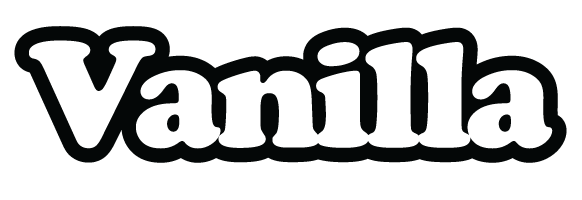Weijing Xiao is a fashion designer and creative technologist, most known for their forward-thinking designs. Their work is closely entwined with both technology and nature. Its elements of beauty, mystery, and disorder serve as sources of inspiration for the designer. Weijing, who specializes in post-human couture and fabric research, experiments with visceral hybrid materiality and creates nature-machine-inspired sculptural silhouettes to investigate the relationship between body, technology, politics, and gender. Their cyborg-ian couture garment was displayed in Cristóbal Balenciaga Museoa, Spain, in February 2022, and was later acquired for the museum’s permanent collection. Following MOTHER, their collection release on CFDA, they took up a couturier role commissioned by artist Yo-Yo Lin for her multisensory performance, Channels. This sold-out two-day performance was hosted by the Shed in July 2022, one of New York’s largest and most prominent art venues.
Weijing started their professional career in the fashion industry at Oscar de la Renta, moved on to Carolina Herrera, and is currently the Head of the Couture Atelier at Marchesa. They were selected as finalists in extremely competitive fashion awards such as the CFDA x Swarovski Re: Generation Scholarship Award, the CFDA x Coach Dream It Real Scholarship Award, and the 2021 CFDA Design Scholarship Award.
Weijing was kind enough to talk to us about their work, influences, and objectives; continue reading to learn more about this talented designer.
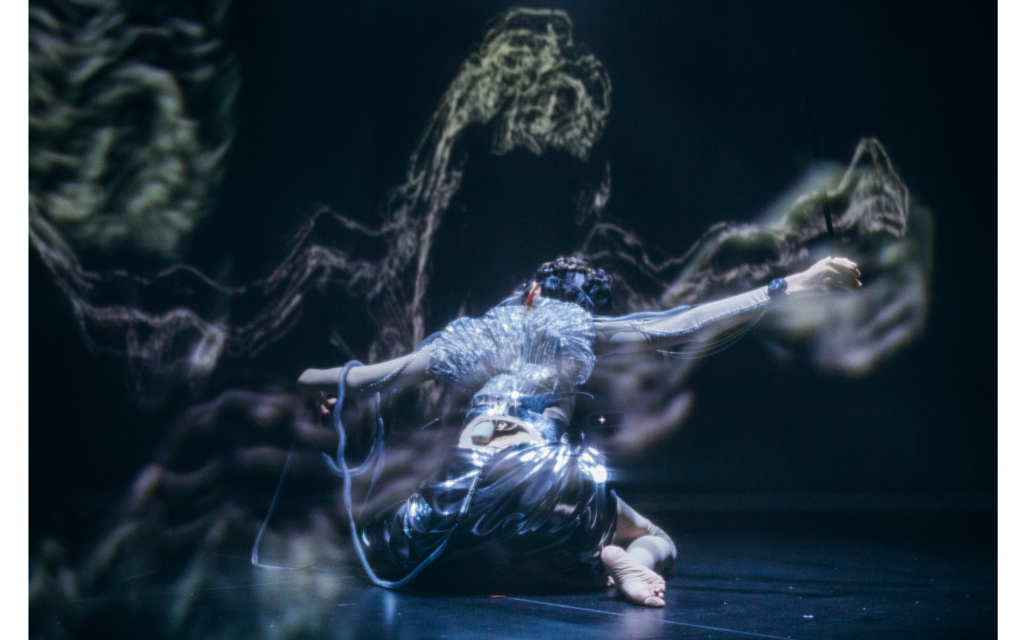
You recently collaborated with the interdisciplinary media artist Yo-Yo Lin on her multisensory performance at the Shed, how did this collaboration arise?
Earlier this year, the Cristóbal Balenciaga Museum acquired my work, Healing Machine and Children of the Cyborg to be in its permanent collection. Yo-yo reached out to me after reading the news about my work and this unprecedented acquisition. My research focuses on post-pandemic trauma to the physical body and a utopian vision of a technologically integrated world. Our resonating cyborg theme and the shared focus on the physical body bring us together. As one of the biggest and most prominent art venues in New York, the Shed has been very active in supporting minority artists and bringing in unique cultural angles to the pioneering forms of art, allowing us to realize our vision.
Your work deals with a multitude of themes such as futurism, technology, and nature, how do you approach these complex narratives?
Our show Channels fully utilized the performance capabilities at the Shed. We have installed motion capture, real-time graphics rendering, and live sound transmission at the same time.
Understanding the role of clothing in such complex narratives was critical. The garment served as Yo-Yo’s second skin. It is an extension of the body, one that blurs the organic and the man-made. I approached this concept by merging traditional couture techniques with fabrics that have the duality of the natural and the industrial, sourcing rare materials with different levels of sheen and stretch qualities. It was central to studying movements, the gestures of a disabled and chronologically ill torso, and their mergence with technology. Every mark, curve, and angle on the bodies are poetries of our composition, and I was excited to accentuate and celebrate them.
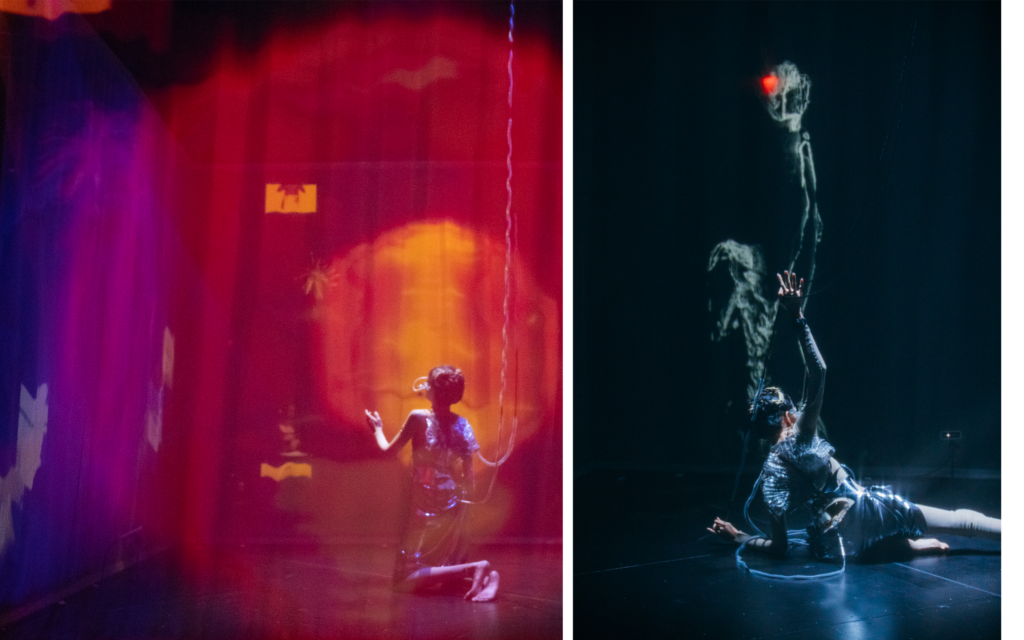
You mentioned your focal point in your design process was Yo-Yo’s movement. How did you translate this focus into the garment?
Yo-yo and I first spoke about her earlier years in the hospital, where I found poetic translations of her memories and feelings. I used couture stitching with metal-fibered threads that spoke to the sense of machinery and the medical stitching in her body. She couldn’t bend her back still, and the half-armor mirror vinyl upholstery fabric reminded her of the support wearables she wore back in the day. Yo-yo has a surgical scar on her back, where I put the zipper in a wiggly way. With the force of the four-way stretch spandex fabric, the zipper closure created a visceral feeling of post-trauma skin. I also found a type of 100% stainless steel fabric refined to organza thinness, which I used to imitate an image of a cyborgian bone structure. Through our multiple fittings and rehearsals, I crafted a contour and material composition that was both adaptive to her body, and simultaneously enabled the interactions between the garment and her choreography.
While designing for Yo-Yo’s performance, were there any specific challenges you had to face and if so, how did they affect your design process?
Approaching theater garments requires a very different methodology than runway fashion. I focused on the totality of aesthetics in the performance, where clothing acts as a component within a larger vision. To enable this kind of dramaturgy, I zoomed out to research on silhouettes, the interaction between materials and lighting, and the dialog between body movement and fabric texture. Realistically, another challenge was the balance between dramaturgy and adaptability. Yo-Yo’s choreography requires both flexibility and accessibility for the garment—my fabric choices must possess an adequate amount of stretch qualities, and my design needs to maintain an architectural rendering while allowing her a wide range of movement. Technically, my garment had to work with the constraints of the devices. We had six contact microphones integrated into the garment, attached to Yo-Yo’s skin to pick up the cracking sound of the bones and movements of the body. I had also applied a specially sourced horsehair tube onto the wire, connecting and suspending Yo-Yo to the machine end. In Channels, it was vital to design the communication between the body and the set.
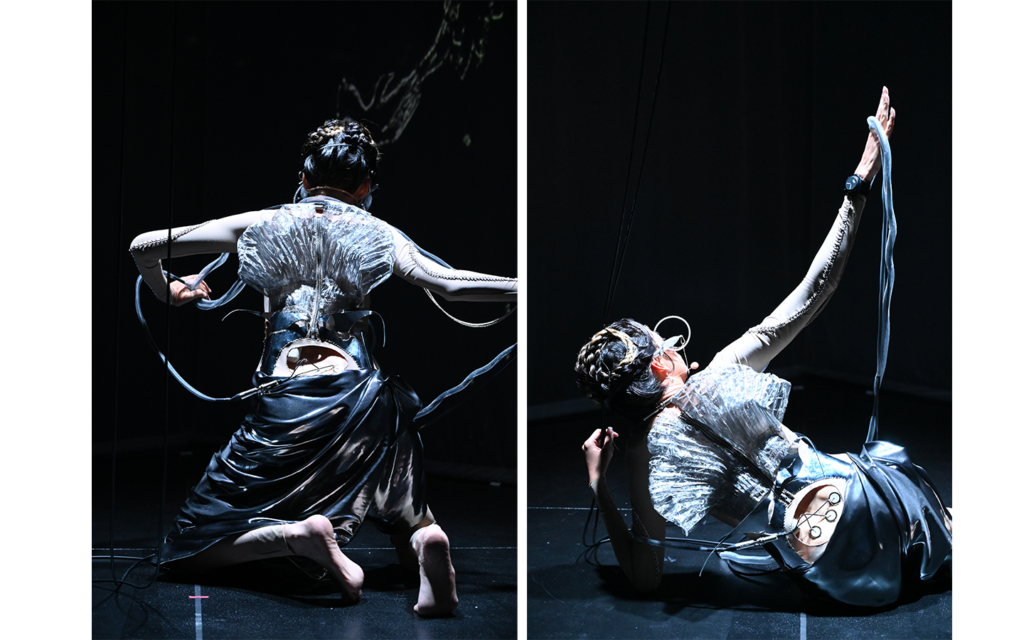
Was there a moment when you felt the proudest and most satisfied with your creations?
“How do you feel?” This is one of the questions that I always ask my collaborators/clients during our fittings. Both Yo-Yo and Mica (our composer) have told me, “You make me feel so powerful.” My creations are meaningful to people. This was one of the moments that moved me so much. The garments become the harness of the wearers’ own memories, their own strengths and vulnerabilities, reflecting what they see in themselves.
Do you intend to continue designing for performative art, and do you have any new projects coming up?
Throughout history, couturiers have been engaged in the world of theater and film: Jean Paul Gaultier for Fifth Element, Oscar de la Renta for New York City Ballet, Carolina Herrera for American Ballet Theater, etc. As a couture designer, I am always fascinated by the pioneering performative art forms and the role of clothing in the world of fine arts. Moving on, apart from creating my brand, I am currently working on two performative projects as an extension of my cyborg research. One is to design performance garments for the tour of Avatar Lilith, a jaw-dropping electronic musician and 3D artist behind a virtual being. Apart from that, I will be the costume consultant partnering with composer Calvin Hitchcock on his upcoming experimental opera, Prophet$, a niche, culty theater piece. To me, fashion is a language within the total form of art, influencing a wider audience with a larger vision.
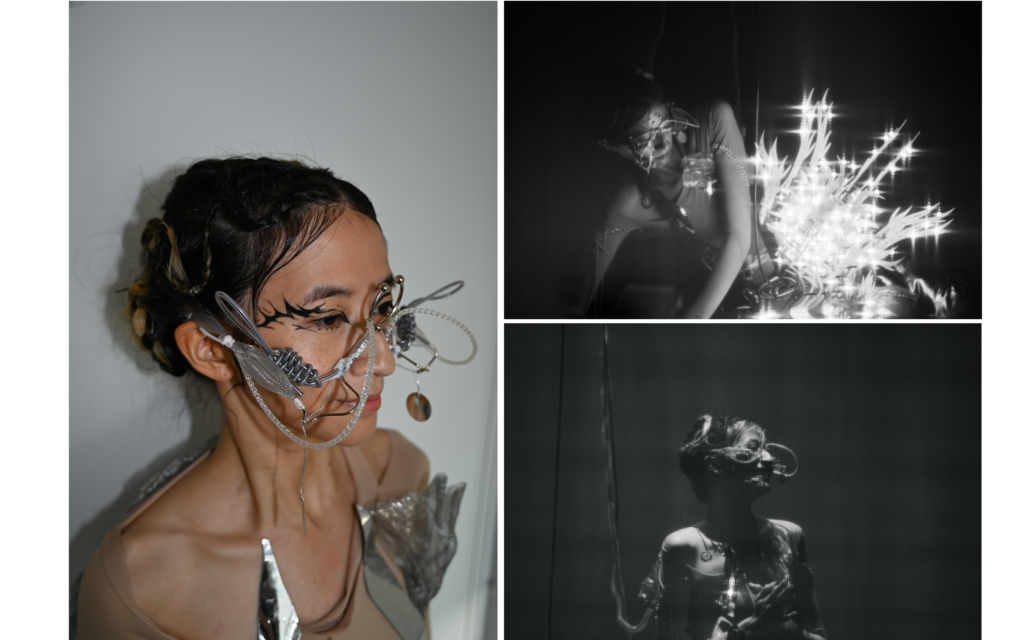
What was the experience or project that marked your career as a fashion designer?
Earlier this year, my couture design, Healing Machine and Children of the Cyborg, was exhibited at the Cristóbal Balenciaga Museum, Spain. The museum then acquired my work for its permanent collection, becoming the first acquisition of its kind in the museum’s history. During this past New York Fashion Week, I launched my collection and designer profile on the CFDA Runway360 platform. These steps are the milestones for me in the fashion world.
You work a lot with advanced technologies and techniques. Is there any you would like to try in the future?
In my search for the next frontier of art, fashion, and technology, my goal is to gain a deeper understanding of “the medium is the message.” Last year, I became an IBM quantum computing practitioner with an award-winning game design project. I have yet to finalize my conceptual channel between quantum and fashion, but this will be my next move in the near future.
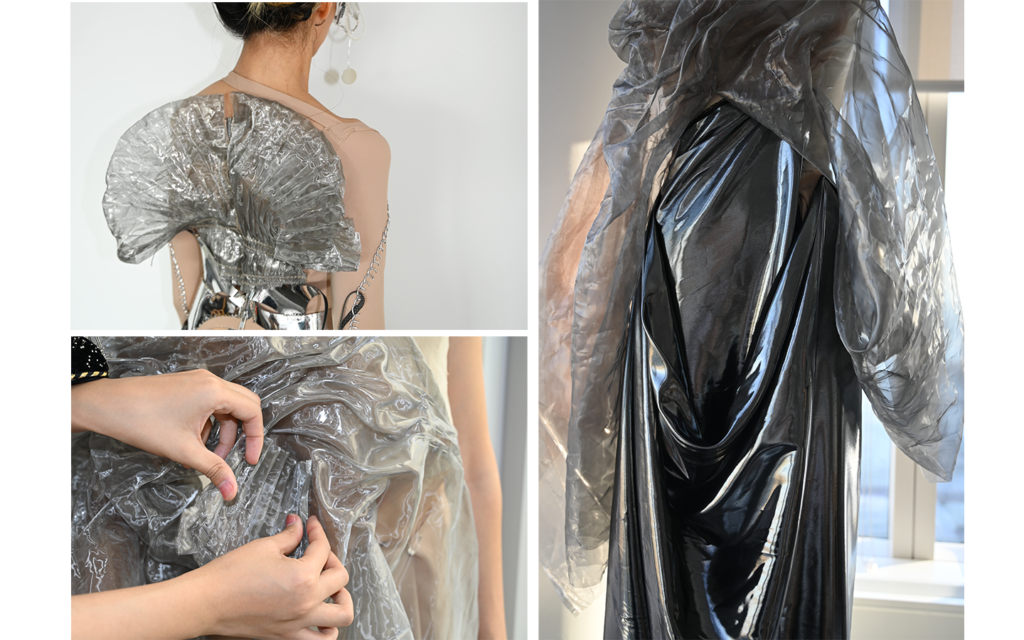
What do you consider to be the greatest motivation behind your work?
Personal experiences. To me, exercising life itself is a massive Fluxus movement. My works are always very autobiographical, coated with layers of metaphors. I am obsessed with the idea of cyborgs in a conceptual way because we have come to a point where the line dividing utopia and dystopia is blurred under the influence of politics, technology, and beliefs.
Do you have any suggestions for fashion designers who want to enter the performance art space?
There are three things I would love to share. First, just like fashion, performance art has its own set of semiotics. It is critical to see the role of garments in the composition of art forms. Second, the performance world is a great field to democratize wearables and push for the idea of designing for real bodies. We can be so used to working on standard mannequins that we forget the unique qualities of human bodies and movements. Third, create. Keep creating, and you will find a methodology unique to you, as well as performers and an audience who resonate with your vision.
To see more of Weijing Xiao’s work visit their Instagram here or their website here.

